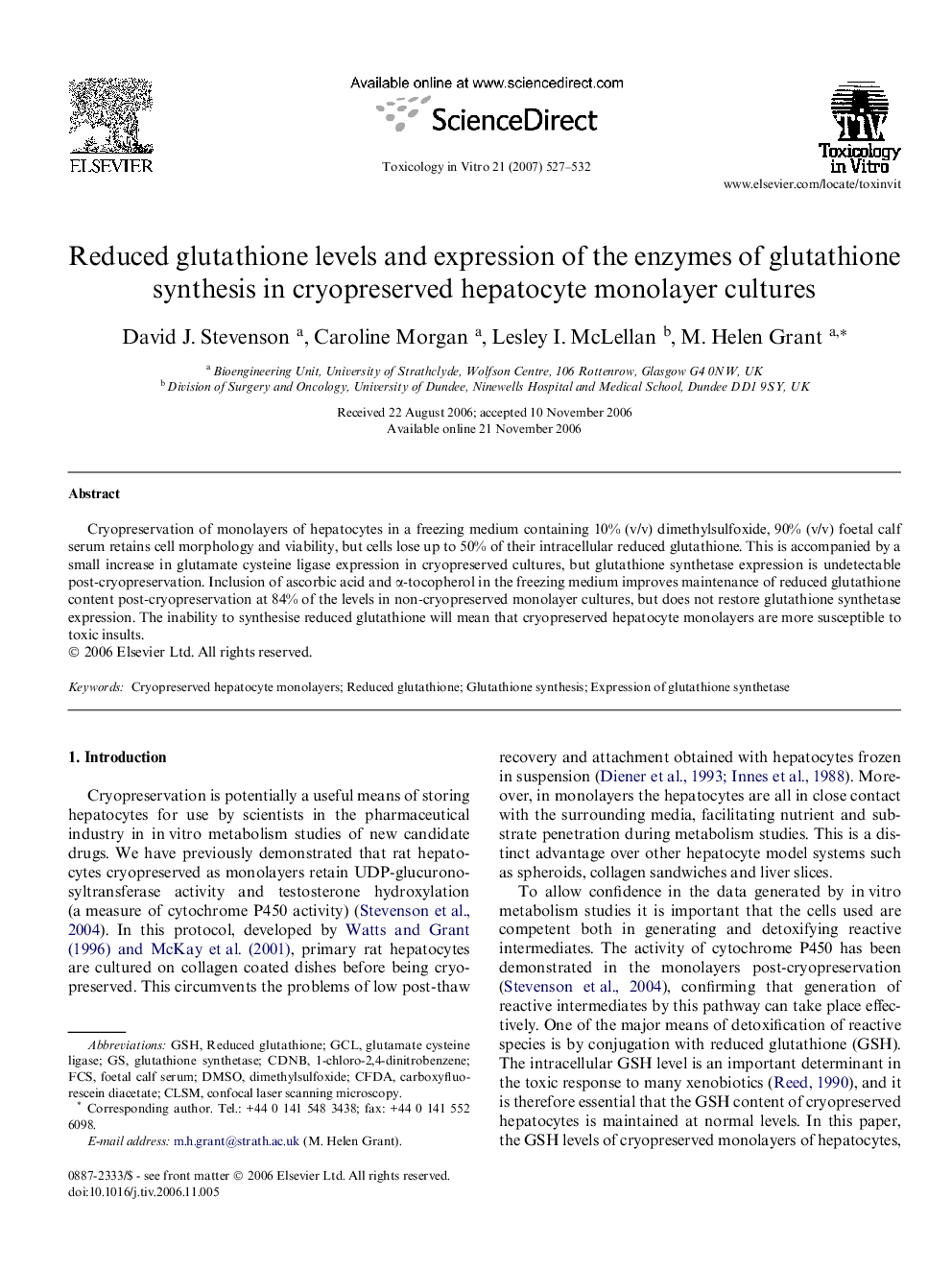| Article ID | Journal | Published Year | Pages | File Type |
|---|---|---|---|---|
| 2603859 | Toxicology in Vitro | 2007 | 6 Pages |
Cryopreservation of monolayers of hepatocytes in a freezing medium containing 10% (v/v) dimethylsulfoxide, 90% (v/v) foetal calf serum retains cell morphology and viability, but cells lose up to 50% of their intracellular reduced glutathione. This is accompanied by a small increase in glutamate cysteine ligase expression in cryopreserved cultures, but glutathione synthetase expression is undetectable post-cryopreservation. Inclusion of ascorbic acid and α-tocopherol in the freezing medium improves maintenance of reduced glutathione content post-cryopreservation at 84% of the levels in non-cryopreserved monolayer cultures, but does not restore glutathione synthetase expression. The inability to synthesise reduced glutathione will mean that cryopreserved hepatocyte monolayers are more susceptible to toxic insults.
